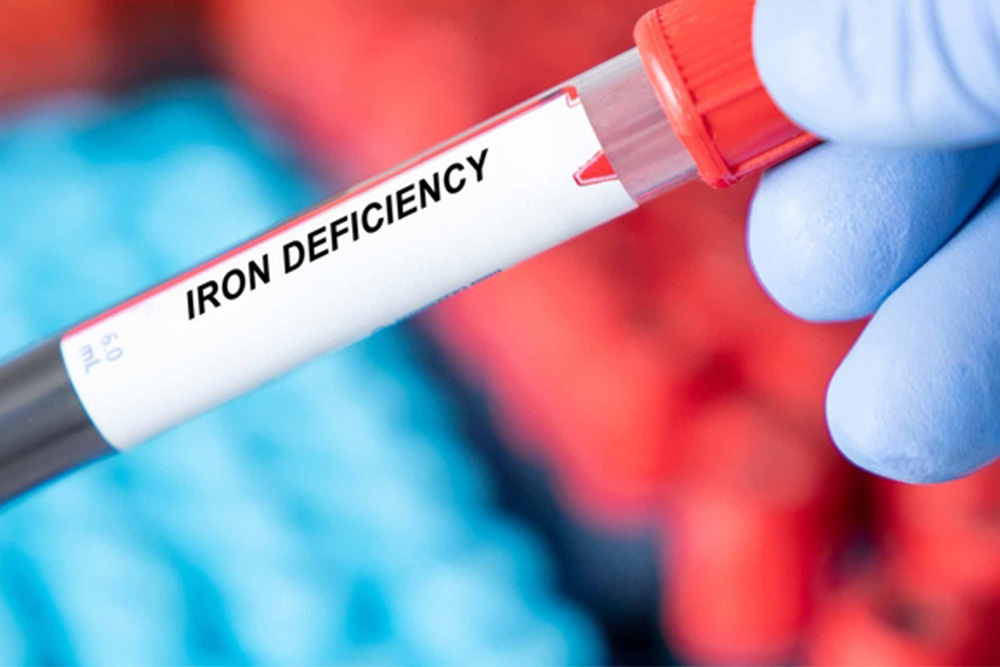Maternal Anemia Before Delivery Linked to Increased Risk of Blood Transfusion

A retrospective cohort study examined the association between maternal anemia before delivery and the risk of peripartum blood transfusion and other adverse perinatal outcomes. The study included 18,357 patients who delivered live, nonanomalous neonates at ≥23 weeks’ gestation, excluding those with sickle cell disease or on anticoagulation therapy. The findings revealed that 30% of the patients had anemia before delivery, defined by a mean hemoglobin of 10.0 g/dL, while 70% did not, with a mean hemoglobin of 12.3 g/dL. Anemia was strongly associated with a 5-fold increase in the odds of receiving a blood transfusion during delivery. Additionally, each 1 g/dL increase in predelivery hemoglobin was linked to a 56% reduction in transfusion risk. The optimal hemoglobin threshold for predicting transfusion was identified as 10.6 g/dL, with high sensitivity and specificity.
Improving Intravenous Iron Use and Hemoglobin Levels in Antepartum Anemia

A prospective cohort study investigated the impact of implementing a standardized protocol for managing antepartum anemia on the utilization of intravenous iron sucrose and clinical outcomes. The protocol included serial third trimester hemoglobin assessments, oral iron supplementation for hemoglobin levels between 9.5-11 g/dL, and intravenous iron sucrose for hemoglobin levels below 9.5 g/dL. The study compared outcomes from six months before and after the protocol’s implementation, involving 1423 women with antepartum hemoglobin levels below 11.0 g/dL.
Intravenous Iron Therapy: Safe and Effective Alternative for Pediatric Iron Deficiency Anemia

In early childhood, iron deficiency anemia (IDA) is often caused by factors such as poor dietary intake, rapid growth, and gastrointestinal blood loss, leading to a range of symptoms from irritability to severe conditions like heart failure. Timely treatment is crucial to prevent long-term neurocognitive impairments and other complications. While oral iron supplementation is the first line of treatment due to its efficacy and low cost, gastrointestinal side effects can lead to poor adherence, making alternative treatment strategies necessary.
Low-Dose Aspirin Linked to Iron Deficiency

Iron deficiency, affecting over a quarter of the global population, is particularly concerning in conditions like iron deficiency anemia (IDA) and hemoglobinopathies. While dietary intake generally maintains iron balance, certain factors like vegetarian diets or chronic medication use can disrupt this balance. In particular, low-dose aspirin use has been linked to iron deficiency in elderly individuals, even in the absence of gastrointestinal bleeding.
Iron Supplementation Post-Gastric Bypass

A study aimed to evaluate whether iron supplementation after gastric bypass surgery meets the needs of both sexes. It also examined the potential for iron overload in men when using multivitamin supplements standardized for women. Conducted at a specialized academic outpatient center, the retrospective study spanned up to 36 months post-surgery and included 283 patients (71 men, 130 premenopausal women, and 82 postmenopausal women). The evaluation of iron status was based on serum ferritin concentrations.
Iron Deficiency Anemia in Pregnancy: New Insights

Iron deficiency anemia is the most common form of anemia globally. In the United States, routine screening for iron deficiency anemia occurs at the start of prenatal care, the third trimester, and before birth. Treatment typically involves oral iron supplementation, which can cause gastrointestinal side effects and reduce adherence. New evidence supports early screening before anemia onset and the use of intravenous iron to accelerate treatment. However, more research is needed on the effects of over-supplementation and iron deficiency without anemia to improve treatment protocols.
Efficient Anemia Supplements: What to Look For?

Anemia, a common condition, requires supplements that are effective, gentle on the stomach, and contain the right ingredients in the correct proportions. With numerous anemia supplements on the market making various claims, it’s important for consumers to identify which ones actually deliver results and are worth the money. Many products lack transparency about their ingredient dosages, leading to potential ineffectiveness. This has led to detailed guidelines on what to look for in a high-quality anemia supplement, emphasizing natural, easily digestible formulations.
Antenatal Anemia Linked to Higher Maternal Morbidity: US Cohort Study

This study aimed to assess the link between antenatally diagnosed anemia and severe maternal morbidity in a large US cohort. Using data from the Consortium on Safe Labor database, which included over 166,000 deliveries, women with antenatal anemia were compared to those without. The analysis revealed that women diagnosed with anemia during pregnancy had higher rates of severe maternal morbidity, neonatal adverse outcomes, and secondary outcomes such as maternal death, transfusion, cesarean delivery, and preterm delivery.
Study Challenges Race-Based Anemia Definitions in Pregnancy, Calls for Uniform Guidelines

This study investigated the effectiveness of race-based definitions for antepartum anemia in pregnant women. It focused on different hemoglobin (Hb) treatment thresholds for Black and non-Black women according to American College of Obstetricians and Gynecologists guidelines. By analyzing a cohort from the University of Pennsylvania, the study found that despite similar antepartum Hb levels, Black women had significantly increased odds of presenting with Hb<11g/dL at delivery compared to non-Black women.
Study Reveals Challenges in Treating Iron Deficiency Anemia in Autistic Children

Children with autism spectrum disorder (ASD) often encounter feeding difficulties, which can lead to various nutritional deficiencies, including iron deficiency anemia (IDA). These feeding problems are typically due to behavioral issues and food aversions common among children with ASD. Pediatric nurse practitioners play a crucial role in assessing these children for mineral deficiencies and need to be vigilant about the potential complexities in managing IDA in this population.

